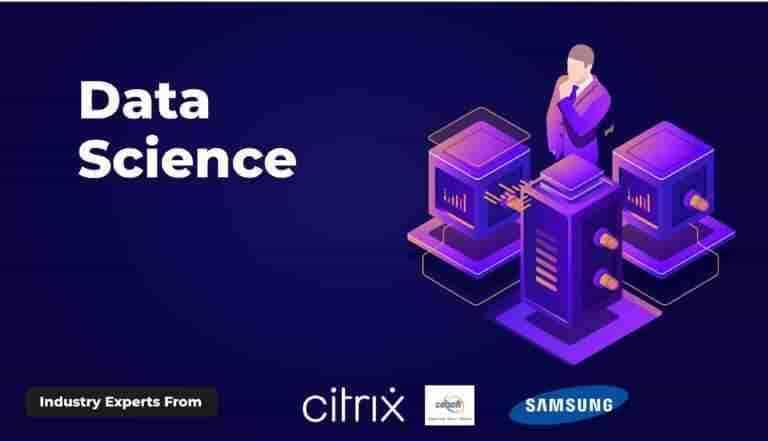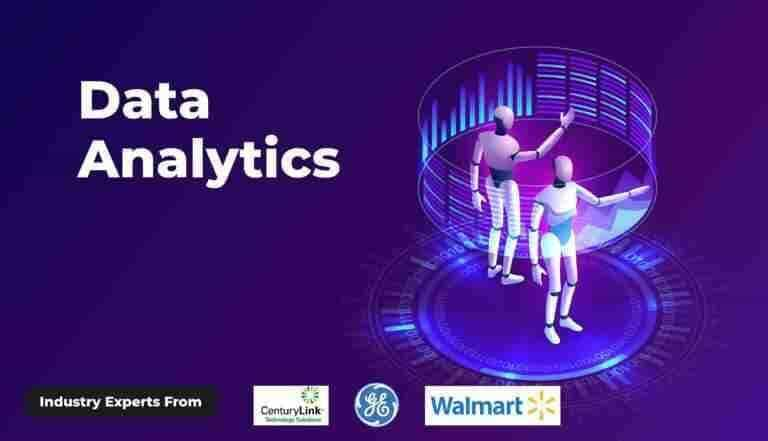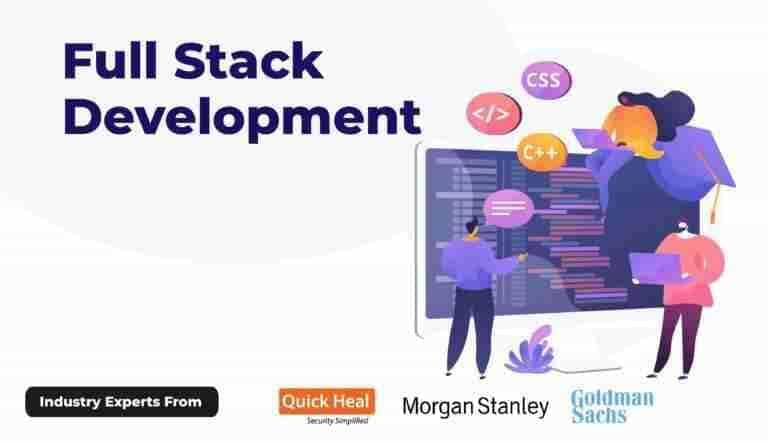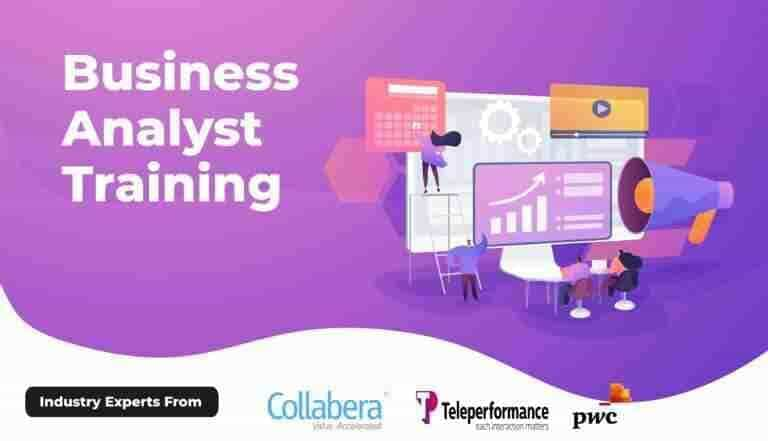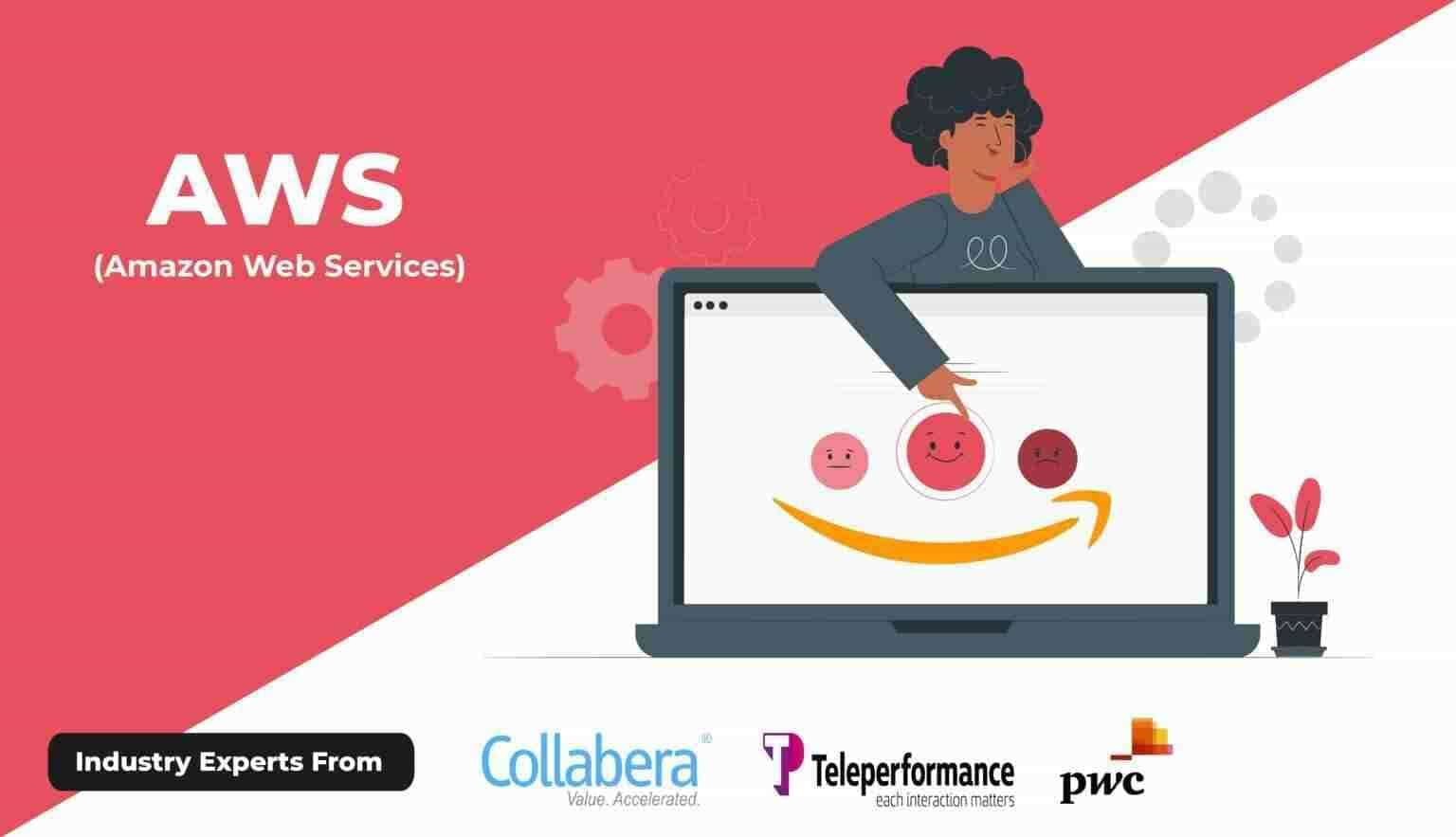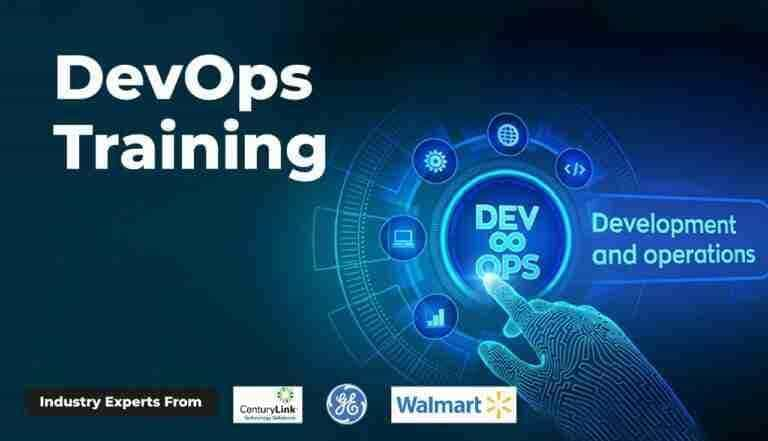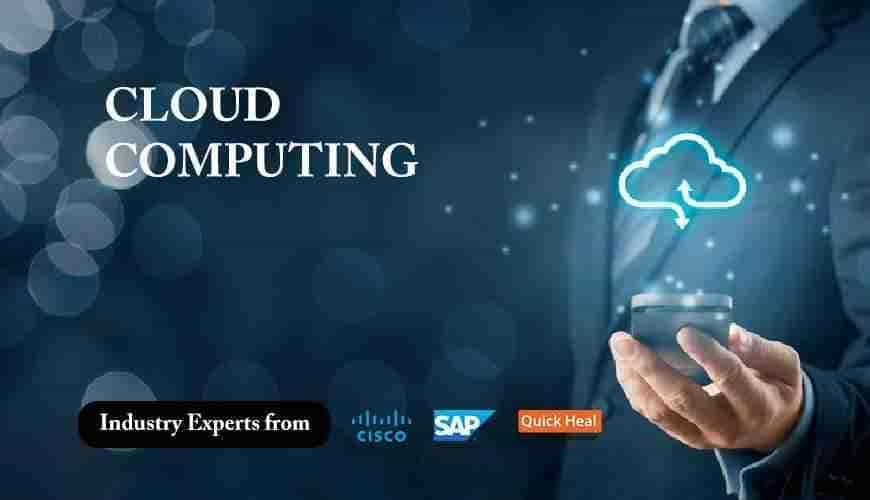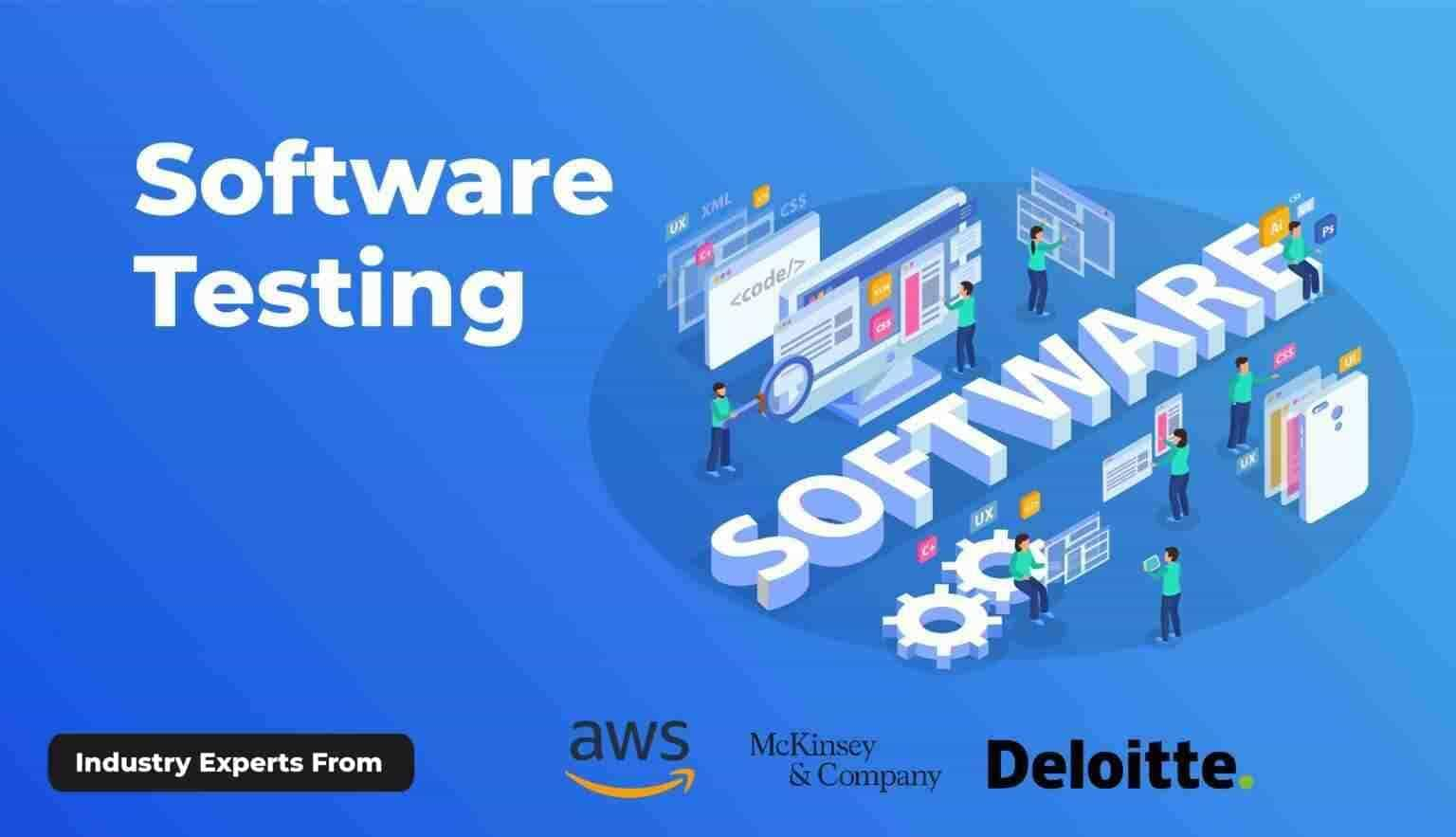Difference Between Data and Information: Simple Explanation with Examples
Pradyumn Singh / 4 days ago - 0
- 10 min read
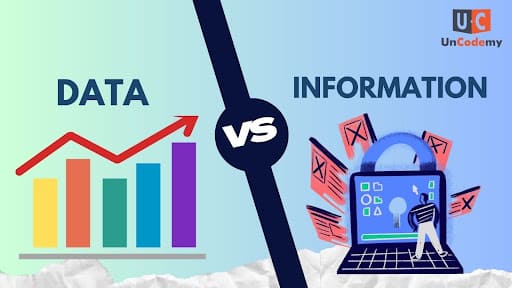
Anyone hoping to succeed in today's data-driven world must be able to distinguish between data and information; it's not just a semantic issue. This distinction serves as the cornerstone for efficient data analysis and well-informed decision-making, regardless of whether you're a student, business professional, or someone considering a data analytics course.
In order to assist you in understandingunderstand the roles and significance of data and information, we will simplify the ideas, point out their distinctions, and give instances from everyday life. By the conclusion, you'll know exactly how unprocessed data turns into insightful knowledge that propels advancement and creativity.
What is Data?
A collection of unstructured, raw facts that require processing is called data. Numbers, phrases, measurements, observations, or even just symbols can be used to represent these truths. Data does not have meaning by itself. It is merely a collection of inputs that can yield significant insights through processing or analysis.
Characteristics of Data:
- Raw and unprocessed
- Unorganized
- No context
- Cannot be directly used for decision-making
Examples of Data:
- Numbers in a list: 92, 86, 75, 99
- Students' names: Maria, Raj, Sarah, and John
- Responses to the survey: Maybe, No, and Yes
- Readings from the sensor: 23°C, 25°C, and 22°C
We may not be able to learn anything from the data at this point. It's similar to having jigsaw pieces but not being able to put them together to form the entire picture.
What is Information?
Data that has been processed, arranged, or structured to give it context and meaning is called information. Raw data becomes information that can aid in situational understanding, conclusion-making, and decision-making when it is analysed and placed in context.
Features of the Data:
- Organised and processed
- possesses meaning and context
- Beneficial for making decisions
- Interpretable with ease
Information Examples:
- The class average score is: Average = 88
- Sales in the first quarter of 2025 rose by 25%.
- Maria had the highest test score.
- 70% of respondents said they preferred product A.
As can be seen, information turns data's unpredictability into something useful.
A Simple Analogy
Think about a jigsaw puzzle.
- Data is similar to the separate parts of a puzzle that are strewn all over a table. They are useful, yet by themselves, they are bewildering.
- The finished puzzle that provides the whole image and enables you to comprehend what you're looking at is called information.
Key Differences Between Data and Information
Despite their close relationship, data and information are very different in terms of their structure, function, and goal. Raw, disorganised facts gathered from multiple sources are referred to as data. Although data can take the shape of text, numbers, symbols, or observations, it is meaningless by itself. A collection of numbers like 105, 87, and 92, for instance, doesn't tell us anything unless we know what they mean. Information, on the other hand, is data that has been meaningfully and practically processed, evaluated, and presented. Those identical numbers become information that can guide decisions like performance analysis or grading when they are designated as the students' test scores.
Utility is another important feature. Until data is converted into information, it cannot be used directly to make decisions. Information is structured and contains context, whereas data is unstructured and autonomous. For example, "Raj scored 92, Maria scored 105" is more useful than merely listing the numbers since it makes it clear what they mean. Large volumes of data are also more likely to be saved and utilised as input in analytical processes, whereas information is the result of these processes and is frequently condensed for quick comprehension in reports, charts, or dashboards.
Data is also necessary for the production of information. Information cannot be produced without first gathering and evaluating data. However, only pertinent and precisely processed data leads to significant insights; not all data necessarily turns into usable knowledge. Essentially, information is the finished product, structured, palatable, and prepared for consumption for real-world applications, while data is the raw ingredient. Since learning the art of analysis and decision-making begins with knowing how to transform data into information, this distinction serves as the fundamental basis for any data analytics course.
Real-World Example: E-commerce Business
Let's use an example from an e-commerce site to further grasp this distinction.
Raw Data:
- Names of customers
- Timestamps for purchases
- Things bought
- Amounts paid
Following processing (information), "Wireless Earbuds" was the most popular item.
- Shopping at its busiest: "8 PM to 10 PM"
- "₹1,250" is the average transaction value.
- "Mumbai" is the region with the highest sales.
For managers to make choices like stocking popular products, providing regional discounts, or modifying ad schedules, this transition is crucial.
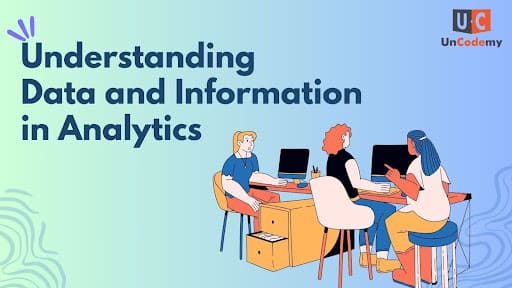
The Role of Data and Information in Data Analytics
Since mastering analytics requires a fundamental comprehension of the distinction between data and information, a data analytics course usually starts with this explanation.
Detailed Dissection:
- Information Gathering Raw data is collected from a variety of sources, including databases, mobile apps, sensors, and websites.
- Data cleaning is the process of removing unwanted or inaccurate data.
- Data processing involves classifying and structuring raw data.
- Data analysis: To find patterns or trends, statistical or machine learning techniques are applied.
- Information Generation: Valuable conclusions are drawn and shared with interested parties.
As a result, while data serves as the foundation, information is what truly adds value.
Why the Difference Matters in Professional Settings
Understanding the distinction between data and information can influence the calibre of judgements made in any field, including marketing, finance, healthcare, and logistics.
An illustration in finance
- Information:Blood pressure readings and patient heart rates
- Information: "Repeatedly high readings indicate that the patient has hypertension."
This distinction aids professionals across all domains in concentrating not only on gathering data but also on turning it into knowledge that can be put to use.
Why Learn This in a Data Analytics Course?
The goal of a data analytics course is to give students the tools they need to turn data into useful business intelligence. These courses' first modules frequently instruct:
Types of data
- Unstructured versus structured
- Information versus data.
- Methods and instruments for gathering data.
- Data processing and cleansing
As the course progresses, you will use these ideas to create information from large datasets using programs like Excel, SQL, Python, Power BI, or Tableau.
Furthermore, people who know not only how to use data but also why it matters are highly valued by top analytics platforms and companies. Understanding the distinction between data and information is the first step in this process.
Data vs. Information vs. Knowledge
Let's add a third phrase to take things a step further: Information.
- Information: Unprocessed input (such as "300, 350, 400")
- Details:"Over the past three months, sales have increased."
- Knowledge:"Sales performance is improved by increasing social media ads in Q4."
Understanding and interpreting information is what is meant by knowledge. Students are taught to get from data to information to knowledge to decisions in a data analytics course.
Common Misconceptions
1. "I'm informed if I have a lot of data."
False. Additional data can result in additional confusion if it is not processed or arranged.
2. "Data is worthless."
False. The foundation for producing useful information is data.
3. "Information never goes away."
No. The information gleaned from data is subject to change as it happens.
Ready to Turn Data into Decisions?
Enrolling in adata analytics coursecan be the best place to start if you want to learn how to work with data, extract insights, and make strategic decisions. In addition to teaching you the distinction between data and information, these courses equip you with useful skills that will help your organisation succeed in the real world.
Conclusion
In conclusion, information and data have distinct functions even if they are related. On its own, data is unrefined and useless, but information is priceless and refined. Success in data-driven sectors depends on students grasping the fundamental distinction between data and information, which is covered in any data analytics course.
The ability to transform data into information should be mastered by anyone hoping to work as a digital marketer, business strategist, or data analyst. After all, having data isn't enough in today's society; you also need to make it relevant.

















